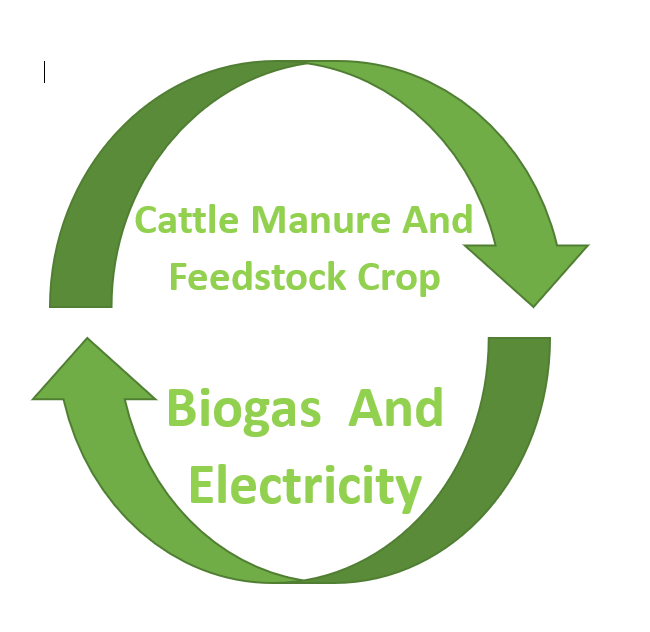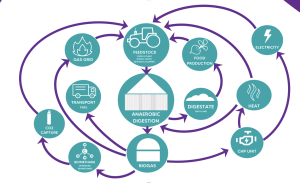Natural Feed, locally produced or grown, to generate renewable energy, for powering local homes and businesses.
- Stage 1 – By product feedstock sourced from Somerset Farm, alongside crop feedstock from local farmers.
- Stage 2 – Feedstock fed several times daily into anaerobic digestion hoppers, these hoppers feed the 5 primary digesters.
- Stage 3 – Once in the digesters, the feedstock is broken down by a multitude of micro-organisms .This occurs over a series of days, depending on feedstock type and digester retention time. Biology is monitored in the form of FOS/TAC testing.
- Stage 4 – The micro- organisms occur through a variety of sequences – hydrolysis, acidogenesis, acetogenesis and methanogenesis.
- Stage 5 – Hydrolysis is the step in which proteins and carbohydrates are broken down into single molecule sugar and amino acids. Acidogenesis occurs and the micro-organisms further break down the sugar and amino acids, to create ethanol and fatty acids. As a consequence of this carbon dioxide and hydrogen sulphide are produced. The next stage is acetogenesis, this is the complete conversion into hydrogen, carbon dioxide and acetic acid. The final stage concludes with the micro-organisms converting the remaining hydrogen and acetic acid into methane and additional carbon dioxide.

- Stage 6 – These chemical stages take place in the absence of Oxygen and in turn create biogas (majority methane and carbon dioxide). This is used for either gas export or powering of CHP engines for electricity generation.
- Stage 7 – The biogas for export then flows through a series of equipment , each with their own purpose. This is to scrub the biogas for extraction of biomethane, along with cooling, compressing and removal of H2S/VOCs. The gas is required to meet upgrader specification. This specification is as per our network entry agreement with National Grid.
- Stage 8 – The as per specification biomethane is then transferred from our biogas upgrading unit (BUU) to the grid control cabinet, where it is exported to the National Grid national transmission system via a high-pressure pipeline. At Murrow AD, this is transferred at a huge pressure of 65 bar. This gives the site the benefit of not being in need of odorant or propane injection.
- Stage 9 – The biogas which does not get utilised for upgrading and exporting through National Grid, is used to generate electricity through our two CHP engines. The electricity generated gives the site the ability to complete Feed-in Tariff submissions alongside exporting to a power purchase supplier. This is another great source of green energy generation. The additional two on site CHP engines generate power for our sites heat and electricity. They utilise low fossil fuel alternative LNG to generate this.
- Stage 10 – Anaerobic digestion also creates the by-product digestate, both in solid and liquid form. This digestate is a nutrient rich fertiliser, which proves beneficial to local farmers land. Aiding plant health and growth. To read more about the advantages of digestate, take a look at our recent story.



